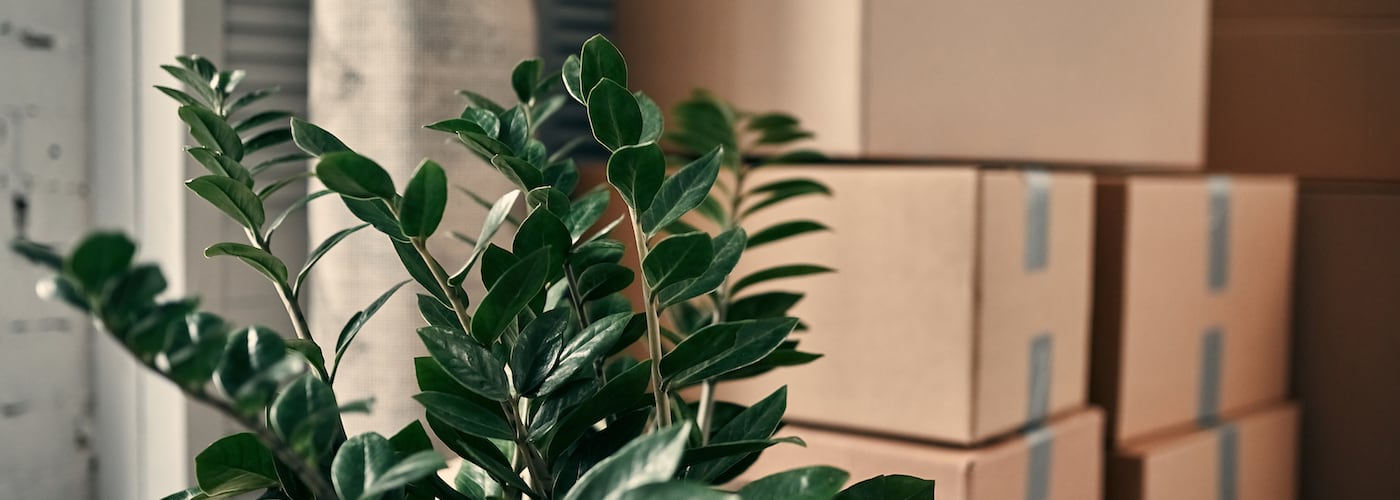Moving to a new home can be an exciting and daunting experience, filled with the promise of a fresh start. While you may have meticulously planned every aspect of your move, one thing that often gets overlooked is how to safely transport your beloved plants.
Whether it’s a collection of vibrant flowers or thriving houseplants, these living organisms require special care during the moving process to ensure their survival in their new environment. In this article, we will guide you through the steps needed to successfully move your plants and help them settle into their new home with ease.
Easy Tips for Moving Plants

Moving plants can be a delicate process, but with a few easy tips, you can ensure they survive the move and continue to thrive in their new location. First, it’s important to plan ahead and research the specific needs of each plant you have. This includes knowing the ideal soil type, sunlight requirements, and watering schedule. As moving day approaches, prune your plants by removing any dead or excessive growth to make them more manageable during the move.
Next, choose appropriate pots or containers for transporting your plants. Make sure they are sturdy and have drainage holes to prevent water accumulation. If possible, use pots that closely match the size of your plants to minimize shifting during transportation.
Before uprooting any plant, water it thoroughly the night before to help reduce stress during the move. On a moving day, gently remove the plant from its pot by tipping it sideways and supporting the base of the stems with one hand while sliding out smoothly with your other hand.
For extra protection during transit, cover the roots of each plant in a damp newspaper or secure them in a plastic bag to retain moisture. Place each potted plant inside a cardboard box that provides adequate space for airflow but keeps them secure from shifting around.
During transportation, keep your plants in a temperature-controlled environment. Avoid exposing them to extreme heat or cold by placing them away from direct sunlight or air conditioning vents.
Once at your new location, unpack your plants as soon as possible and water them lightly after replanting to help rehydrate their roots and encourage growth. Give them time to adjust by gradually exposing them to their new surroundings before returning them back to their regular care routine.
By following these easy tips and giving your plants some extra attention during the move, you can ensure they smoothly transition into their new home while maintaining their health and beauty along the way.
Prepare Plants Ahead of Time
Preparing plants ahead of time is crucial for their successful growth and development. It involves taking certain steps to ensure that they are adequately prepared to thrive in their new environment.
One essential step is proper watering, which should be done before transplanting the plants. This helps to prevent them from experiencing shock when being moved to a new location. Additionally, pruning any damaged or dead leaves or branches can help improve their overall health and appearance.
Another important aspect of plant preparation is addressing soil quality. Adding organic matter, such as compost, can enrich the soil and provide the necessary nutrients for optimal growth. Testing the pH level of the soil can also determine if any adjustments are required to create an ideal environment for specific plants.
Bring Plants Inside If Staying Overnight

During certain times of the year, especially during colder months or extreme weather conditions. It may be necessary to bring some of your outdoor plants inside to protect them from potential harm. This particularly applies if you are expecting to stay overnight or away for an extended period. Bringing your plants indoors not only safeguards them from harsh temperatures but also helps maintain their overall health and prolongs their lifespan.
Before bringing your plants indoors, it is crucial to prepare a suitable space for them within your home. Choose a well-lit area that receives sufficient sunlight throughout the day. Such as near a window or under artificial grow lights. Ensure that the temperature in the room remains consistent and doesn’t fluctuate too much. Sudden changes can shock and stress the plants.
Help Your Plants Adjust After the Move
Moving can be a stressful experience for both you and your plants. Just like humans, plants need time to adjust to their new surroundings. Here are some tips to help your plants settle in after the move.
Firstly, make sure that your plants are properly packed and transported. Secure them in sturdy boxes or containers with sufficient padding to prevent damage during the journey. If possible, keep them in an area with a stable temperature and avoid exposing them to extreme heat or cold.
Upon arrival at the new place, find suitable spots for each plant, considering their specific sunlight and watering needs. Make sure they have access to enough light and sufficient airflow. Avoid placing them directly under air conditioning vents or heaters, as they can cause sudden temperature changes that may shock the plants.
Before replanting your botanical friends, it’s important to give them some time to recover from the stress of the move. Allow them a few days in their temporary pots. Or hold off on major pruning until they have adapted to the new environment.
Remember, it may take several weeks for your green companions to fully acclimate to their new surroundings. Patience is key when helping your plants get settled after a move. Before you know it, they’ll be thriving again in their fresh home!


